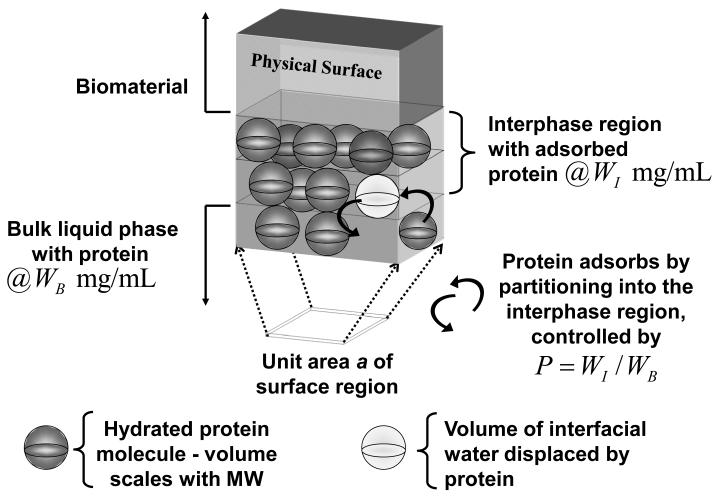Figure 1.
Partitioning of a spherical protein into the interphase separating bulk solution from the physical surface of a biomaterial adsorbent. The thin unit area of surface a in contact with bulk solution is expanded to reveal a three-dimensional interphase containing two hypothetical protein layers occupying an interphase volume VI at weight concentration WI (mg/mL) adsorbed from bulk solution at concentration WB. Curved arrows indicate that a protein partitioning into the interphase from bulk solution must displace a volume of interphase water equivalent to the volume of the hydrated protein because two objects cannot occupy the same space at the same time. The volume of displaced interphase water depends on the size of the protein (MW) and may involve hundreds-to-thousands of water molecules per adsorbed protein molecule. Steady-state is controlled by the partition coefficient .

